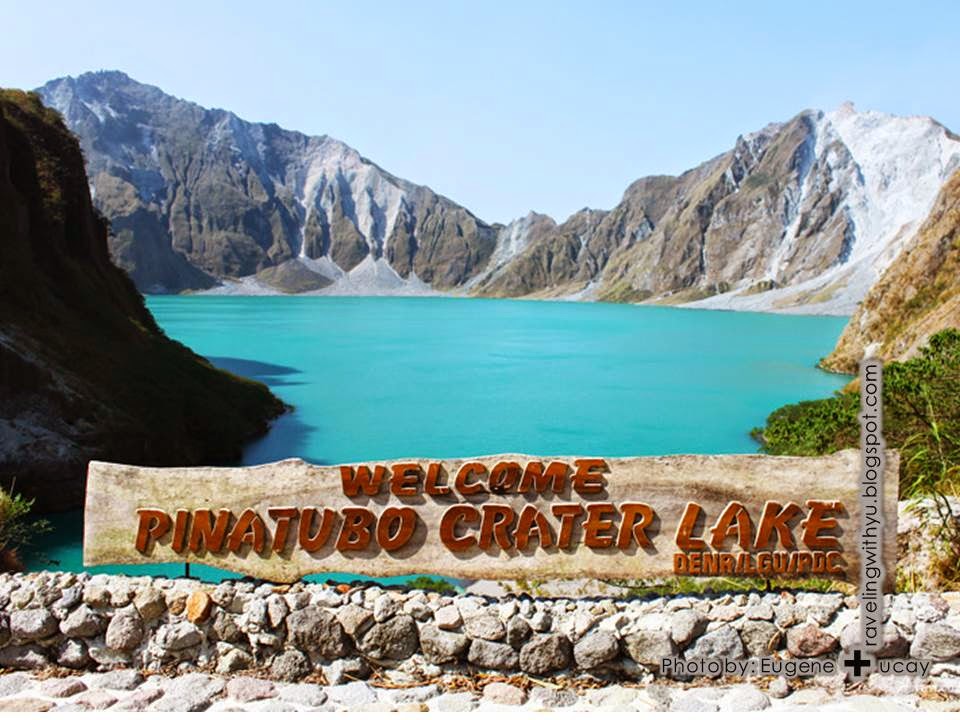Wanna know the details of my next climb? If yes, that's nice because I'm happy to share with you our itinerary and what should we expect from Mt. Batulao. Indeed, I'm climbing you baby...
Mt. Batulao - Nasugbu, Batangas
Jump-off point: Evercrest Golf Course, Nasugbu
LLA: 14.0408 N 120.8011 E 811 MASL
Days required / Hours to summit: 1 day / 2-4 hours
Specs: Minor climb, Difficulty 4/9, Trail class 3 with 60-70 degrees assault
Features: Open trails, rolling slopes, scenic views of Batangas
I heard that it's nice climbing Mt. Batulao from January - February because of the cool breeze and a good trekking weather. Suuuuuuuuuuuuuuuuweeet!
Here's our plan or our itinerary: (Thanks Rhose Anne Ramos for coordinating again... bless you!)
Mt. Batulao Day Hike on January 31, 2015
Itinerary:
5:00 am - Assembly Time (Coastal Mall)
6:00 am - ETD Bus to Nasugbu, Batangas
8:00 am - ETD Evercrest Golf Course in Nasugbu
8:15 am - Start Trek
2:00 pm - ETA Evercrest
Expenses:
120.00 - Bus fare from Coastal Mall to Nasugbu
20.00 - Tricycle fare from Evercrest to starting point
25.00 Registration (Old Trail)
25.00 Mountain Dew (Summit)
25.00 Registration (New Trail)
20.00 - Shower
Then I want to eat some Bulalo so we will be dropping at Leslie's or some Bulaluhan in Tagaytay...
You ca also try this:
ITINERARIES
Old to New Trail
0400 ETD Coastal Mall bus terminal to Nasugbu, Batangas
0715 Arrival at Evercrest
0730 Start trek
0845 Arrival at Fork. Take the left, downward trail that enters some woodland
0900 Arrival at Camp 1. Register.
1015 Arrival at Camp 8, commence final assault
1100 Arrival at summit; lunch
1200 Start descent via New Trail, which is opposite the Old Trail at the summit
1300 Arrival at New Trail Campsite. Register again.
1530 Back at Evercrest; clean-up at nearby sari-sari store
1600 ETD for Tagaytay by jeepney (P30.00)
1630 ETA Tagaytay; anything goes from here
New to Old Trail
0400 ETD Coastal Mall bus terminal to Nasugbu, Batangas
0715 Arrival at Evercrest
0730 Start trek
0845 Arrival at Fork. Take the middle/slightly right upward trail
0930 Arrival at New Trail Campsite. Rest / Register.
1030 Arrival at summit; early lunch
1200 Start descent via Old Trail, which is opposite the New Trail at the summit
1300 Arrival at New Trail Campsite. Register again.
1530 Back at Evercrest; clean-up at nearby sari-sari store
1600 ETD for Tagaytay by jeepney (P30.00)
1630 ETA Tagaytay; anything goes from here
Mt. Batulao - Nasugbu, Batangas
Jump-off point: Evercrest Golf Course, Nasugbu
LLA: 14.0408 N 120.8011 E 811 MASL
Days required / Hours to summit: 1 day / 2-4 hours
Specs: Minor climb, Difficulty 4/9, Trail class 3 with 60-70 degrees assault
Features: Open trails, rolling slopes, scenic views of Batangas
I heard that it's nice climbing Mt. Batulao from January - February because of the cool breeze and a good trekking weather. Suuuuuuuuuuuuuuuuweeet!
Here's our plan or our itinerary: (Thanks Rhose Anne Ramos for coordinating again... bless you!)
Mt. Batulao Day Hike on January 31, 2015
Itinerary:
5:00 am - Assembly Time (Coastal Mall)
6:00 am - ETD Bus to Nasugbu, Batangas
8:00 am - ETD Evercrest Golf Course in Nasugbu
8:15 am - Start Trek
2:00 pm - ETA Evercrest
Expenses:
120.00 - Bus fare from Coastal Mall to Nasugbu
20.00 - Tricycle fare from Evercrest to starting point
25.00 Registration (Old Trail)
25.00 Mountain Dew (Summit)
25.00 Registration (New Trail)
20.00 - Shower
Then I want to eat some Bulalo so we will be dropping at Leslie's or some Bulaluhan in Tagaytay...
You ca also try this:
ITINERARIES
Old to New Trail
0400 ETD Coastal Mall bus terminal to Nasugbu, Batangas
0715 Arrival at Evercrest
0730 Start trek
0845 Arrival at Fork. Take the left, downward trail that enters some woodland
0900 Arrival at Camp 1. Register.
1015 Arrival at Camp 8, commence final assault
1100 Arrival at summit; lunch
1200 Start descent via New Trail, which is opposite the Old Trail at the summit
1300 Arrival at New Trail Campsite. Register again.
1530 Back at Evercrest; clean-up at nearby sari-sari store
1600 ETD for Tagaytay by jeepney (P30.00)
1630 ETA Tagaytay; anything goes from here
New to Old Trail
0400 ETD Coastal Mall bus terminal to Nasugbu, Batangas
0715 Arrival at Evercrest
0730 Start trek
0845 Arrival at Fork. Take the middle/slightly right upward trail
0930 Arrival at New Trail Campsite. Rest / Register.
1030 Arrival at summit; early lunch
1200 Start descent via Old Trail, which is opposite the New Trail at the summit
1300 Arrival at New Trail Campsite. Register again.
1530 Back at Evercrest; clean-up at nearby sari-sari store
1600 ETD for Tagaytay by jeepney (P30.00)
1630 ETA Tagaytay; anything goes from here












